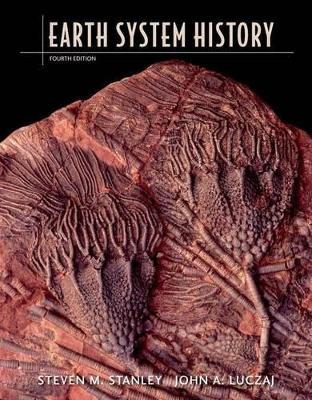Earth System History

Earth System History
Dr. Stanley has written three previous editions of Earth System History and a total of three editions of its predecessors, Earth and Life Through Time and Exploring Earth and Life Through Time. His other books include Principles of Paleontology (with David M. Raup), Macroevolution: Pattern and Process, The New Evolutionary Timetable, Extinction (nominated for an American Book Award), and Children of the Ice Age: How a Global Catastrophe Allowed Humans to Evolve. He has been elected to the National Academy of Sciences and the American Academy of Arts and Sciences and has received a Guggenheim Fellowship and numerous awards, including the Paleontological Society Medal, the James H. Shea Award of the National Association of Geoscience Teachers (for books authored), the Mary Clark Thompson Medal of the National Academy of Sciences, the Twenhofel Medal of the Society of the Society for Sedimentary Geology, and the Penrose Medal of the Geological Society of America.
Dr. Stanley has taught courses in Earth History, Paleontology, Paleoecology, Macroevolution, Marine Ecology, Biodiversity, and Darwin and Darwinism.
John Luczaj is a field geologist interested in sedimentology, geochemistry, and hydrogeology, specializing in diagenesis in sedimentary systems. He has conducted research on hydrothermal dolomitization, fluid-inclusions in minerals, groundwater geochemistry and aquifer recovery, geologic mapping, geomorphology, and Holocene cave deposits. One of his important contributions was the first successful dating of diagenetic dolomite using the U-Pb method.
He received a B.S. in geology from the University of Wisconsin Oshkosh in 1993, an M.S. in geology from the University of Kansas in 1995, and a Ph.D. in geology from Johns Hopkins University in 2000. He worked as a USGS-NAGT Summer Trainee at the Hawaiian Volcano Observatory in 1993, as a visiting assistant professor at
PRP: 3385.20 Lei
Acesta este Pretul Recomandat de Producator. Pretul de vanzare al produsului este afisat mai jos.
3046.68Lei
3046.68Lei
3385.20 LeiLivrare in 2-4 saptamani
Descrierea produsului
Dr. Stanley has written three previous editions of Earth System History and a total of three editions of its predecessors, Earth and Life Through Time and Exploring Earth and Life Through Time. His other books include Principles of Paleontology (with David M. Raup), Macroevolution: Pattern and Process, The New Evolutionary Timetable, Extinction (nominated for an American Book Award), and Children of the Ice Age: How a Global Catastrophe Allowed Humans to Evolve. He has been elected to the National Academy of Sciences and the American Academy of Arts and Sciences and has received a Guggenheim Fellowship and numerous awards, including the Paleontological Society Medal, the James H. Shea Award of the National Association of Geoscience Teachers (for books authored), the Mary Clark Thompson Medal of the National Academy of Sciences, the Twenhofel Medal of the Society of the Society for Sedimentary Geology, and the Penrose Medal of the Geological Society of America.
Dr. Stanley has taught courses in Earth History, Paleontology, Paleoecology, Macroevolution, Marine Ecology, Biodiversity, and Darwin and Darwinism.
John Luczaj is a field geologist interested in sedimentology, geochemistry, and hydrogeology, specializing in diagenesis in sedimentary systems. He has conducted research on hydrothermal dolomitization, fluid-inclusions in minerals, groundwater geochemistry and aquifer recovery, geologic mapping, geomorphology, and Holocene cave deposits. One of his important contributions was the first successful dating of diagenetic dolomite using the U-Pb method.
He received a B.S. in geology from the University of Wisconsin Oshkosh in 1993, an M.S. in geology from the University of Kansas in 1995, and a Ph.D. in geology from Johns Hopkins University in 2000. He worked as a USGS-NAGT Summer Trainee at the Hawaiian Volcano Observatory in 1993, as a visiting assistant professor at
Detaliile produsului








